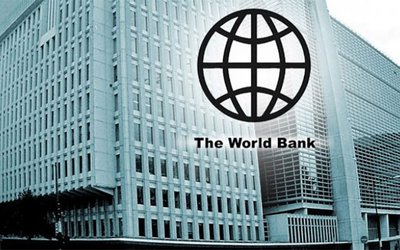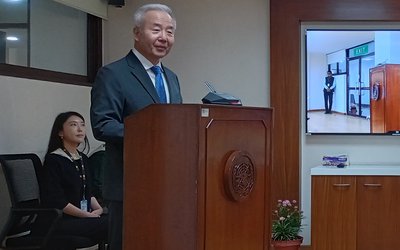As such, the Himalayan nation of Nepal has set the goal of full integration into the world economy. The country is a founding member of SAARC (South Asian Association for Regional Cooperation) and was the 147th member to join the World Trade Organization in 2004. However, in terms of trade in goods, Nepal is still facing a high and ever-increasing trade deficit.
Last year's decline in both import and export cannot be considered healthy for the nation and in terms of revenue.
Trade driven by foreign investment
Many emerging countries in Asia such as Malaysia and countries such as Vietnam, Laos, Cambodia and Myanmar are also following the same pattern: the business sector, driven by foreign investment, has been selected as a leading sector to develop rapidly. Nepal seems following this strategy. The government has adopted the Nepal Trade Integration Strategy (NTIS) in 2023 as its major promotional activity for trade policy export expansion. Questions are being raised in this context: Is the strategy successful or at least steps in the right direction?
Major exportable and quality standards
Still, the major export products - almost unchanged for a long time - are carpets, textiles, garments and juice, all from the industrial sector. Given the relatively weak industrial base (only 15% of GDP) and the unproductive agricultural sector (32% of GDP), it is not surprising that the export volume achieved is not sufficient to overcome the existing trade deficit.
The reasons are the relatively small production volume and insufficient compliance with the required international quality standards. Furthermore, high transaction costs for cross-border trade and regulatory personnel administration barriers hamper export-oriented trade.
There are other structural and institutional barriers as well. With supply side issues and so many constraints in terms of international marketing of goods, one must conclude that landlocked Nepal cannot be competitive in the international trade environment in the near future except through cross-border trade with India.
On the other hand, export of labor services and tourism should make the country's economy sustainable. Therefore, a radical change in the country's strategy is inevitable and the focus should be on the export of services including hydroelectricity as a potential sector of the future.
No results were seen
Looking at it this way, even though the government envisages a self-sufficient economy by increasing exports and substituting imports in the policies and programs it brings every year, the results have not been achieved.
Due to the government not being able to fulfill its goals, the situation of Nepal in foreign trade is getting weaker and the import-oriented economy has got more support.
The gap in foreign trade is widening due to decline in domestic production, increase in production cost in competitive market, increasing migration of young people for employment and failure to implement policy arrangements.
The data speaks for itself
According to the Customs Department of Nepal, in the last financial year 2079-80 B.S. , in the last year, all the indices of foreign trade have decreased, while the import-export ratio has become equal to 10:1.
According to the Customs Department, when the total foreign trade decreased by 16.58 percent compared to the previous year, the trade deficit decreased by 15.45 percent and the import decreased by 16.08 percent. Although there is a high decline in exports, there has been a significant improvement in the trade deficit due to a decrease in imports as well.
Last year, the biggest decline was seen in exports. The department said that there has been a decline of 21.44 percent in export trade this year.
In this way, the share of exports in the total foreign trade was 9.43 percent in the previous year, but it has decreased to 8.88 percent in the last year.
The decline of 21 percent in exports compared to the previous year is a matter of great disappointment.
Problems in foreign trade
Nepal's foreign trade has many problems: it is a landlocked country, has to compete with India on high imports and low exports, produces low quality goods with high production costs, capital formation is inefficient and government policies are outdated.
Being a landlocked country, Nepal has to import/export from India, which not only increases transportation costs but also increases the cost of business transactions moving from one transport to another, border crossing fees and transit time.
Open Border:
Nepal has three distinct borders with India which includes an open border policy. As a result, there is a large flow of Indian goods at lower prices. Indian goods are smuggled at border crossings, while foreign goods are smuggled into India through informal routes. Only traffickers benefit from illegal practices while the country benefits little from these activities. Efforts are underway to curb this issue from both the countries.
Nepal's trade balance is negative because it imports more than exports both in terms of volume and value. Most of the exports are agricultural produce, handicrafts and raw materials, all of which are resources of low commercial value that bring little foreign exchange to its coffers. Nepal does not have a well-developed industrial base, so the product is of low quality and the cost of production is high, which makes its products unable to compete in the international market.
Low capital formation is another major problem of Nepal's foreign trade, which has deprived the country of limited economic activities. Due to the lack of favorable environment for private and foreign investment, there is also a lack of modern infrastructure for industrial base development. This leaves the country dependent on domestic finance with little capital formation to grow and expand the productive base.
As many countries entered the world trade, Nepal has fallen behind as it has become less competitive. Now many countries are exporting quality products that can be produced by Nepal at cheap prices.
In addition, Nepal lacks the skill resources, educational base and modern manufacturing technology to compete in the international trade market.
Modern trade policy is a major problem for the efficiency of Nepal's foreign trade. When no trade policy is effective due to political will, corruption or a combination of both, the combination of problems results in huge trade losses.
What are the remedies?
Industrial bases should be increased. Promoting export-oriented goods. Export should be properly encouraged. Good trade policies should be adopted to improve the quality of goods. Access to the World Trade Organization was expected to help Nepal expand its international trade and compete abroad. However, after about two decades , there has been a sharp decline in Nepal's exports, while imports are increasing rapidly, and the trade deficit is increasing. Nepal's accession to the WTO was expected to diversify its exports and develop new trade partners. However, this did not happen.
The main reasons for the widening trade deficit with India, China and other countries are as follows: Political instability, poor connectivity, power generation crisis and difficult labor relations etc. are major factors in Nepal's supply side constraints.
In addition, geographical constraints such as high transportation costs, delays at border crossings, waiting for transport and lack of temporary storage at crossings have negatively affected trade as a whole.
Countries should focus on promoting products and services that have a competitive advantage. It needs to expand its human resource base with better training and education for its entire workforce.
The government should encourage entrepreneurs to engage in business activities by facilitating the economy. Nepal should simplify the transport modality which has high transportation cost, improve its border crossing time, facilitate temporary storage and remove administrative hassles.
There should also be an overall improvement in the export of agricultural products to reach the 400 million consumers bordering India. The government should implement policies that can attract foreign investment to develop or enhance basic industries that can promote capital growth and economic diversification.
The country should invest in basic infrastructure such as roads, railway power generation and storage depots to reduce border crossing times and change transport modes to reduce border delays.
In view of the domestic demand and the sharp increase in the price of Chinese goods, Nepali industry should supply a large portion of household goods. Overall, there is a great need to create a favorable environment for business in Nepal. Industrial unrest and rigid labor laws are the biggest obstacles to Nepal's industrialization and its future participation in the rapidly globalizing economy.
Major export problems
It is not an exaggeration to say that production, infrastructure and marketing are the main problems of the export business. In Nepal, it is not an exaggeration to say that the product development programs that were done in the past in Nepal could not be implemented in every province, the production was not in a significant amount, the contribution of the agricultural sector to the gross domestic product is decreasing, and the lack of competition in the service sector, etc.
Suggested strategy:
As Nepal has entered into multiple multilateral and regional trade arrangements (RTAs), the BBIN recommended strategy for accelerated export growth is expected to include Nepal's specific context. Even though more attention will be paid to labor-intensive export expansion, this has not happened yet. Some issues are: diversification into a wider range of products such as IT and IT enabled services such as software and other semi-manufactured, manufacturing and skill-based service products; Strengthening institutional infrastructure for exports, such as Trade and Export Development Centers, specializing in both products and selected markets; Also modernization of other trade promotion institutions and elimination of procedural bottlenecks; trade facilitation, reduction and elimination of export duties and taxes; rationalization of incentives, speedy delivery of raw materials, equipment and components related to export production - whether indigenous or imported, and speeding up the provision of export assistance; collaborative exchange rate and demand management; And there should be adequate investment arrangements for infrastructure with a high concentration of export manufacturing industries.
In the context of Nepal, the success of export business cannot be imagined until we commercialize the agricultural sector. Therefore, making sincere efforts in the development, strengthening and promotion of agricultural production and trade is the reality, obligation, hope, demand and precondition of Nepal.
Recently, the service sector business is also increasing. Tourism has shown the potential to contribute significantly to foreign exchange earnings. The state can contribute by planning broad development strategies, providing essential infrastructure and creating effective regulatory mechanisms to protect the interests of industry, consumers and the environment.
Nepal is stepping into uncharted territory after joining the group of middle-income developing countries in 2026, and exporters are worried about high customs duties and strict rules of origin.
Being an underdeveloped country meant that Nepal was given priority. The import and export activities of any country can affect the country's GDP, its exchange rate, and the level of inflation and interest rates. Rising levels of imports and growing trade deficits can negatively impact a country's exchange rate.
India is Nepal's largest trading partner with which it has a growing trade deficit. Nepal's main items for export to foreign and European Union markets include ready-made garments, woolen carpets, handicrafts, woolen goods etc. Nepal can export silver jewellery, spices and essential oils in long term perspective. For the development of these products, practical projects should be identified and explored. Nepal should use Chinese ports to promote trade with third countries and reduce the growing trade deficit. This is important for Nepal as the landlocked country offers four ports namely Shenzhen, Lianyungang, Zhanjiang and Tianjin and three dry ports in Lanzhou, Lhasa and Sigatse where China has built railways.
The fact that these ports will end Nepal's sole dependence on Indian ports for foreign trade does not seem to have been implemented.
To sum up , Nepal needs to make a huge commitment to export promotion and the implementation to be effective.
- “Kolahalko Kolaj “: A Collection Of Scattered Memories By Prakash Sayami
- Apr 02, 2025
- Nepal-India Trade, Transit And Unauthorized Trade: Some Considerations
- Jan 16, 2025
- PM Oli’s Forthcoming Visit To China: Will The Achievement Be Complete?
- Nov 29, 2024
- Obituary To Dr. Mohan Man Sainju!
- Nov 02, 2024
- Donations To Political Parties: Some Reflections
- Oct 24, 2024















